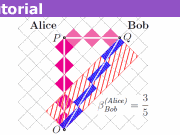What is relativistic mass and why it is not used much?
It happens that the term relativistic mass is used, in particular in the introductory text on special relativity. It should be noted that whether or not to use relativistic mass to a large extent is a matter of convention, convenience, and semantics as long as it is used properly and does not have any impact on the predictions of special relativity. This FAQ is intended to clarify the concept and explain why it has essentially fallen out of fashion in the scientific community.
Table of Contents
The concept of relativistic mass
In special relativity, the expressions for the total energy and momentum of an object can be written as
$$E = m_0 \gamma c^2, \quad \vec p = m_0\gamma \vec v,$$
where ##\gamma = \frac{1}{\sqrt{1-v^2/c^2}}## and ##m_0## is the invariant mass (or rest mass) of the object. If we introduce the relativistic mass
$$m = m_0\gamma$$
these expressions turn into
$$E = mc^2, \quad \vec p = m\vec v,$$
which many find more familiar since the first is an iconic relation in special relativity and the latter coincides with the classical expression for momentum.
Shortcomings of relativistic mass
In classical mechanics, there are two different concepts of mass, gravitational mass, which determines the force on an object due to gravity (##\vec F = m\vec g##), and inertial mass, which determines the resistance to the acceleration of an object (##\vec a = \vec F/m##). Since special relativity cannot include Newtonian gravity, the concept of gravitational mass is moot. In addition, the resistance to acceleration depends on both the velocity of the object as well as the direction of the force and so relativistic mass cannot, in general, correspond to a generalization of either. In the rest frame of an object, we regain the relation between force and acceleration of classical mechanics, but this is well described by the invariant mass and there is no need to introduce relativistic mass for this purpose.
A common misconception that can be attributed to the concept of relativistic mass is that an object changes its internal structure by gaining mass when it travels at relativistic speeds. The object’s internal structure is independent of its velocity and it will always appear to be the same in its rest frame. The source of this confusion is that relativistic mass depends on the frame in which the object is observed and the concept of mass is typically regarded as a property of an object. See also our FAQ on the mass-energy equivalence.
Because of the above, relativistic mass is generally not used in scientific communication as quoting it would also require quoting the velocity of the object. Furthermore, as evidenced by ##E = mc^2##, the relativistic mass is simply proportional (and thus equivalent) to the total energy of an object, which is a concept far less liable to misunderstandings as energy is frame dependent also in classical mechanics.
How kinematics are treated in special relativity
Instead of introducing the relativistic mass of an object, we simply consider the invariant mass ##m_0## to be the mass of an object. The total energy and momentum of an object is given by
$$E^2 = m_0^2 c^4 + p^2 c^2, \quad \vec p = m_0 \gamma \vec v.$$
The relativistic relation between the force acting on an object and its acceleration is given by
$$\vec F = \frac{d\vec p}{dt} = m_0 \frac{d(\gamma\vec v)}{dt},$$
which is equivalent to the definition in classical mechanics for small velocities. If the force is collinear with the velocity, this can be written as
$$F = m_0\gamma^3 a.$$
Note here that we would not recover ##F = ma## if we introduced relativistic mass. As ##\gamma \to \infty## when ##v \to c##, the faster an object is traveling, the more force is needed to accelerate it. This, or equivalently the fact that the total energy goes to infinity as ##v\to c##, is the more appropriate argument for why massive objects cannot be accelerated to the speed of light.
Professor in theoretical astroparticle physics. He did his thesis on phenomenological neutrino physics and is currently also working with different aspects of dark matter as well as physics beyond the Standard Model. Author of “Mathematical Methods for Physics and Engineering” (see Insight “The Birth of a Textbook”). A member at Physics Forums since 2014.








Leave a Reply
Want to join the discussion?Feel free to contribute!